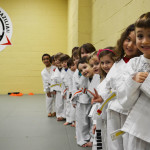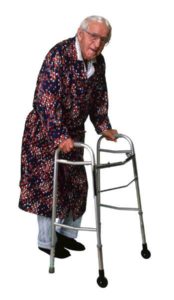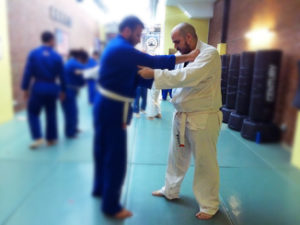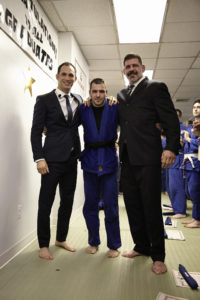
Summertime has come to an end, and in its place is the excitement – and the jitters – of heading back to school.
While some kids may be excited to rejoin their friends and welcome the routine of school, others are more anxious about the transition. Your child may even experience the same common physical effects of anxiety adults have, with symptoms from stomachaches to sleeping problems.
Add onto that emotional effort of making new friends, meeting new teachers, fears of being bullied, pressure of making good grades, and worries of being unpopular.
As parents, it’s important to remember that all kids feel some sort of stress in the back to school transition. Imagine a change in your work schedule, your sleeping and eating schedule and the emotional labor of building a new peer group (or rejoining an old one) and you’ll start to get the picture.
These physical and emotional feelings are very common, and even the most well-adjusted kids are bound to feel some sort of stress during back-to-school.
So what can we as parents do to help our children cope with the physical and emotional stresses associated with the back to school season? We’re going to offer you some tips that we’ve found to be very helpful for families at our schools.
Click here for the full Tip Sheet!
TIP #1 – SET (OR RESET) A HEALTHY SLEEP ROUTINE
It’s not unusual for families to have different schedules during the summer months than they do during the rest of the year. The longer days, vacations and warm weather make it easy to stretch or expand bedtimes and sleep routines. But now that school is here, it’s time to get everyone back on a regular schedule that supports healthy moods and proper mental function.
Like adults, kids that do not get adequate sleep can tend to be drowsy and fatigued throughout the day, which makes concentrating during school much more difficult. In addition, someone who is already irritable can become more sensitive to social disputes.
Sleep also contributes to a healthier immune system. You can help your child enter each school day with a more energetic and positive approach simply by making sure they get the right amount of sleep each night.
Here’s how to set a healthy sleeping pattern with your children:
1. Establish a set bedtime and wake time for the week days.Make sure that you specify that this time is non-negotiable. We also find that keeping an identical or similar structure over the weekends is very helpful – that way, there’s nothing to have to “reset” each Monday.
2. Have a clear routine (with basic ground rules) for 1 hour before bedtime. Again, setting a good pattern makes a difference for sleeping habits. Here are some ways to do it:
- Don’t let them eat dinner too close to bedtime. Most children, if they eat just before bedtime, have more difficulty falling asleep than if they’ve had time to digest, adjust and wind down.
- Pair down physical activities as you get closer to their bedtime. Kids need to get into both a mental and physical state of “cooling down” prior to getting into bed.
- Cut out any intense “stimulating” activities. There are dozens of studies about the effect of screen-time before bedtime, so this includes video games and computers. Not only can they be very addictive, they can also keep your child’s mind over-stimulated even after they’ve stopped playing with them. TV viewing at bedtime is not recommended because it may affect your child’s ability to fall asleep.
3. Establish a 20 – 30-minute nightly “calm-down” bedtime routine.
Create a pattern that’s predictable and regular. The routine can include taking a bath, putting on their pajamas, reading, and other relaxing activities.
TIP #2 – GIVE THEM FOOD FOR THOUGHT (LITERALLY)
Not all diets are about physical performance! What we eat (and drink) can drastically affect our mood, our energy level and our ability to control our moods. In the martial arts, we say, “you can’t out-run poor nutrition!”
Even children that get a lot of exercise and are athletic can be susceptible to the consequences of poor eating habits. Not eating right can result in fatigue, anxiety, poor concentration, and mood swings.
You can help your children feel better each school day simply by adjusting their diet and getting rid of foods and snacks that are counter-productive.
Here are some healthy eating tips:
- Don’t keep unhealthy foods in your house. Open your refrigerator and get rid of the foods you know are unhealthy for your children. Yes, that includes sodas and most juices as well as snacks that are high in sugar (processed or otherwise), and foods that are high in fat.
- Build a healthy menu for the week. Instead of cobbling together something last minute, plan their meals. You can even do this with your child. It can take work, but with resources like Pinterest and Facebook, there are plenty of “done for you” meals that don’t take much time to fire up. If you get your kid to participate in the process, you can build a few different healthy meals and allow them to choose what they want to eat each day. Plus they’ll be more intrinsically motivated to stick with the plan. Take it to the next level and head to the grocery store together and help pick up all of the ingredients.
- Perhaps the toughest of all… lead by example. Remember that it’s not “do as I say”, it’s “do as I do”. If your children see you eating unhealthy foods, then you are contradicting what you say. Kids are smart – they’ll resist your efforts to improve their eating if you’re not eating well yourself. (The added benefit of “walking your talk” in this area is you get healthier as well!).






 Sonja Hofstetter
Sonja Hofstetter



 If we want to lead a healthy lifestyle, we have to develop healthy habits. And just as with Martial Arts training, there are no shortcuts.
If we want to lead a healthy lifestyle, we have to develop healthy habits. And just as with Martial Arts training, there are no shortcuts. The good news for us is martial arts are designed for that slow process of incremental growth. We crawl in the beginning, and then when we can stand on our two feet confidently, we’re invited to reach a little beyond where we are. Maybe not to run, but certainly a brisk walk or a trot. It may mean working with more experienced partners, or it may mean more progressive techniques. It could be moving to a more advanced program of training.
The good news for us is martial arts are designed for that slow process of incremental growth. We crawl in the beginning, and then when we can stand on our two feet confidently, we’re invited to reach a little beyond where we are. Maybe not to run, but certainly a brisk walk or a trot. It may mean working with more experienced partners, or it may mean more progressive techniques. It could be moving to a more advanced program of training.